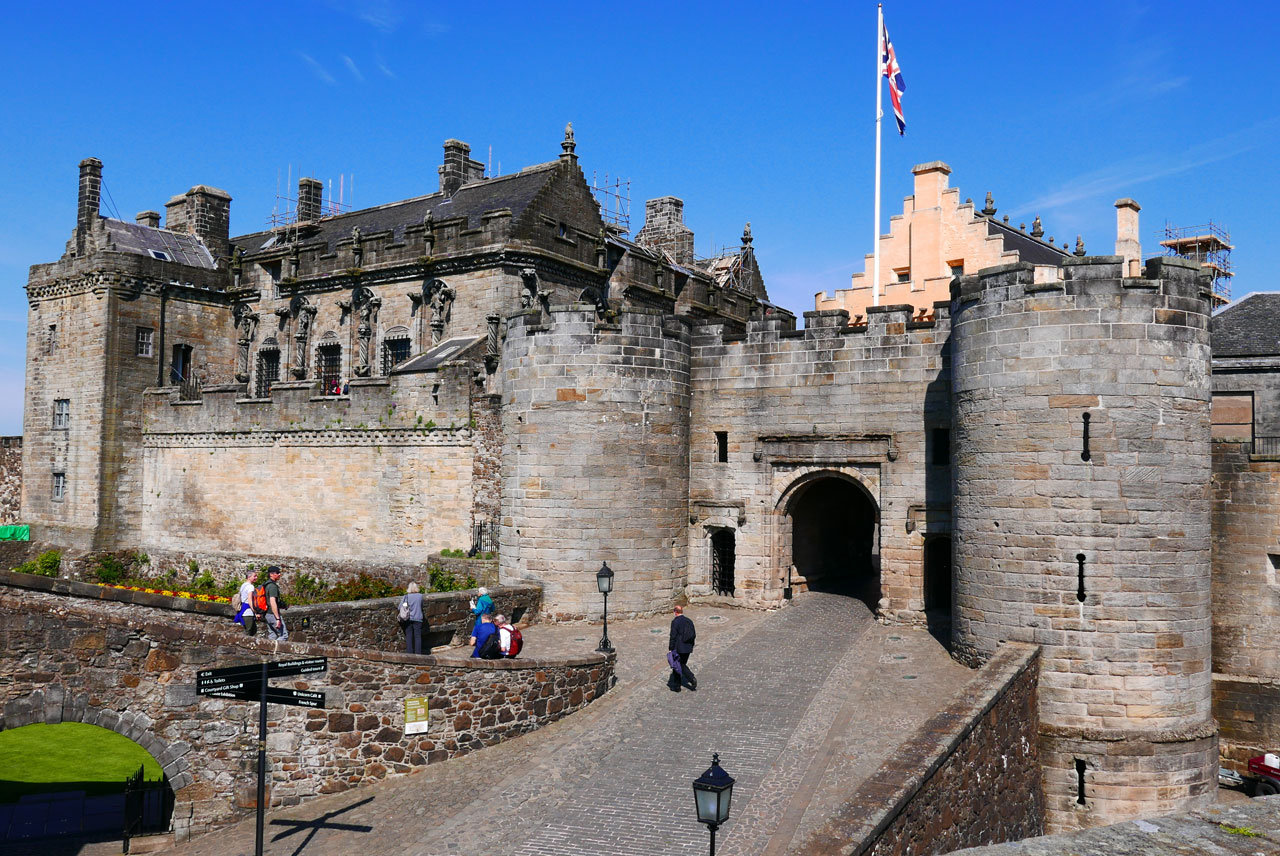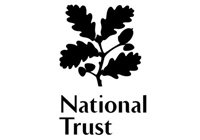- Home
- Scottish Castles
- Stirling Castle
Visit Stirling Castle

A brief history
Stirling Castle has been called "the Key to Scotland" and it is the one small link between north and south, Highlands and Lowlands, which in its time has been a refuge for kings, a prison for disobedient subjects and a storehouse for weapons and explosives. With three steep sides surrounding the castle, it sits in a strong defensive position on top of a volcanic rockface overlooking the city of Stirling.
Stirling's importance developed from the fact that it controlled the lowest crossing point of the River Forth. The earliest recorded castle at Stirling was used by King Malcolm III in the 11th century. King Alexander I dedicated a chapel there in 1110 and his successor, King David I, used Stirling castle as a residence and royal administration centre.
The castle regained its importance in 1174 when William the Lion was forced to sign the Treaty of Falaise, agreeing to the chief Scottish castles, including Stirling, to be garrisoned by English soldiers. The castle changed hands more than any other in Scotland.
Stirling is particularly remembered for its part in the Scottish Wars of Independence with England, and as the castle dominated the passage to the north of Scotland it became the focus of military operations. In 1297 the Scots under William Wallace beat the English at Stirling Bridge and another important battle was Robert Bruce's decisive victory at Bannockburn in 1314.
In Edward I's time Stirling Castle was believed to be the strongest castle in Scotland and was built mainly of wood. When the castle was occupied by the English a lot of building work took place but all traces of the castle as it was at the time of the Battle of Bannockburn has since disappeared. The castle we see today dates mainly from the 15th and 16th century.
Stirling Castle was the childhood home of Mary Queen of Scots and it became a favourite residence of the Stewart Kings and Queens who held stately celebrations from coronations to christenings.
The Castle is now in the care of Historic Environment Scotland which is a public body set up to care for and promote Scotland's historic environment.
Sterling Castle Highlights
THE GREAT HALL
This magnificent banqueting hall was completed for James IV in 1503 and is the largest of its kind ever built in Scotland. It was used for feasts, dances and pageants. It has four pairs of tall windows at the dais end, where the king and queen sat, and was heated by five large fireplaces.
The Great Hall was also used for royal baptism celebrations. In 1566 Mary, Queen of Scots, celebrated the baptism of her son, the future James VI. The second baptism celebration was in 1594 when James VI held a grand gathering in honour of his son, Prince Henry.
THE ROYAL PALACE
The Royal Palace is beautifully decorated and furnished and it is one of the best-preserved Renaissance buildings in the UK. The Palace has been extensively restored to look much as it would have done during the 16th century and during the reign of James V.
The Royal Palace recalls the years when it was the childhood home of Mary, Queen of Scots. A tour of the palace will take you through the King and Queen's outer and inner chambers as well as their bedrooms.
THE CHAPEL ROYAL
James VI ordered the building of this elegant chapel and it was completed in time for the christening of his son and heir Prince Henry, which took place on 30 August 1594. The chapel was redecorated by the artist Valentine Jenkins in preparation for the visit of Charles I in 1633.
Stirling Castle's role changed from Royal Residence to Military Base in 1685 and by the start of the 1900s the chapel building was used as training rooms and a canteen for the garrison. Restoration of the chapel began in the 1930s but it took until 1996 for the Chapel Royal to be fully restored to its former glory.
QUEEN ANNE GARDENS
The Queen Anne Gardens have a long and interesting history. It is a pretty and peaceful garden on the sunny south side of the castle, overlooked by the Queen's Lodgings and the Prince's Tower.
There has probably been a royal garden here since the 1400s and in the 1620s the flat lawn was turned into a bowling green.
THE GREAT KITCHENS
See what life was like for the men, women and children who prepared the lavish food for kings and queens and also baked the daily bread. Only the very best was good enough for Royalty.
OTHER
Other highlights include the Castle Exhibition, Regimental Museum and Tapestry Studio, The Palace Vaults and Stirling Heads Gallery.
Location
Stirling Castle
Castle Wynd, Stirling FK8 1EJ
Official website: Stirling Castle

